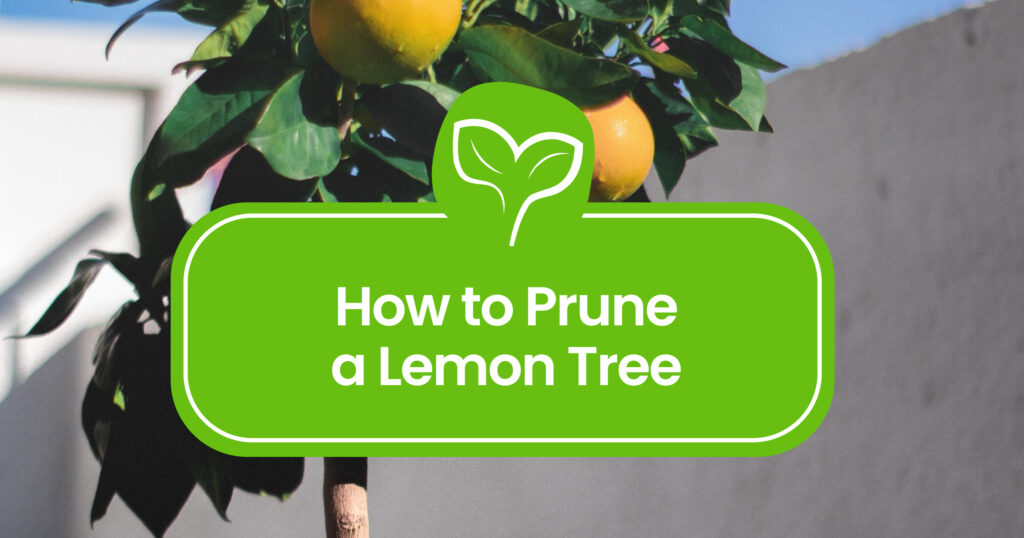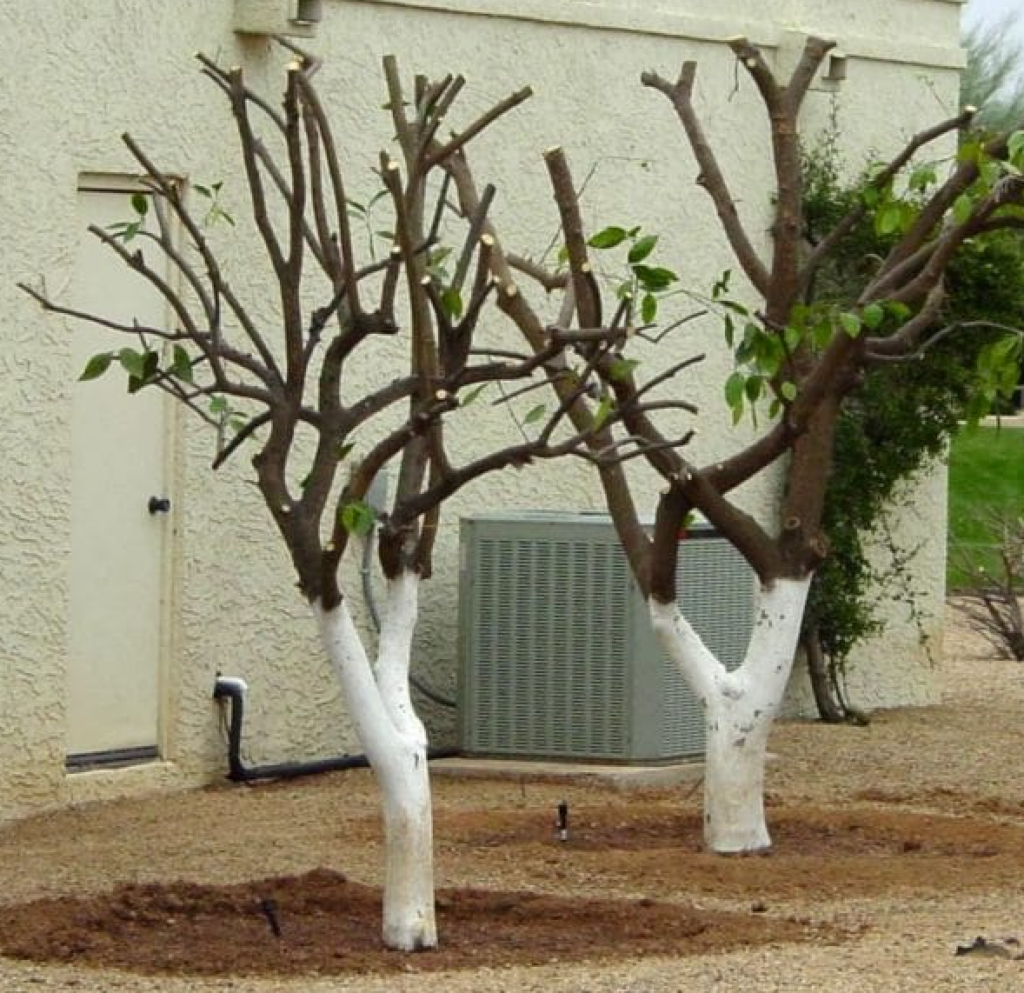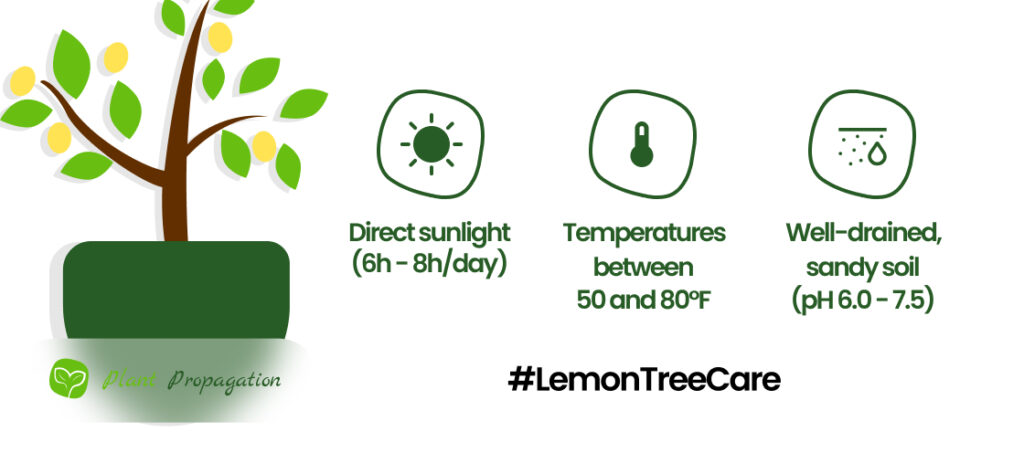
If you’ve ever wondered how to keep your lemon tree healthy, happy, and bearing those luscious, tangy fruits, you’re in the right place. In this guide, we’ll take you through the nitty-gritty of lemon tree pruning, which is simpler than you might think. Get ready to give your lemon tree the love and attention it deserves.
Best Time to Prune Lemon Trees
Okay, before we dive into the pruning action, let’s chat about timing. When is the best time to whip out those pruning shears and get to work on your lemon tree? Well, here’s the deal: Citrus trees – such as lemon trees – love a good trim during late winter or early spring. This is when they’re coming out of their dormant phase and won’t freak out too much from being pruned. But remember, if your lemon tree looks sick, pruning can do more harm than good. Only prune if your plant is healthy!
The Basics of Lemon Tree Pruning
Why should you prune your lemon tree, you ask? Great question! Pruning is like the tree’s version of a spa day, but it also has some real benefits for your fruit yield. It helps maintain the tree’s shape, keeps it healthy, and promotes those lemony jewels you’re after. Here’s what you need to know:
- Maintaining Shape: When you prune your lemon tree, you’re giving it a little shape-up. Pruning helps control the size and appearance of your tree, making it easier to manage and admire.
- Health Booster: Regular pruning removes dead or diseased branches, which helps your tree stay healthy. Sick branches draw energy from the plant that otherwise could be poured into healthy growth.
- Increased Fruit Production: Ah, here’s the good stuff! Pruning encourages your lemon tree to produce more fruit and better quality ones. You’ll be drowning in lemons (figuratively speaking, of course).
Hard Pruning Citrus Trees
Now, let’s talk about hard pruning. Don’t worry; it’s not as scary as it sounds. Hard pruning is like hitting the reset button on your lemon tree. You might need to do it if your tree’s been a bit neglected or overgrown. It means cutting back the branches quite a bit in late winter, to promote a lot of fresh growth (new shoots) in the upcoming season. This will not necessarily mean a lot more fruits, plus you also need to follow up with a light pruning in the autumn.

The Tools You’ll Need
Time to gear up for the big moment – you’re going to need some tools. But don’t stress; we’re not talking about heavy-duty lumberjack equipment here. All you need are some basic tools to get the job done:
- Pruning Shears: These are your trusty sidekicks for most pruning tasks. They’re handy for making clean cuts on smaller branches.
- Loppers: For those thicker branches (2 inches+ in diameter) that need a little more muscle. Loppers have long handles to give you extra leverage.
- Gloves: Protect your hands from scratches and thorns. It’s like armor for your fingers.
- Safety Goggles: Safety first, folks! Don’t forget eye protection if you’re dealing with larger branches – those lemon tree twigs can be pesky. Of course, if you have a smaller tree, you can leave the goggles in the shed.

How to Prune a Lemon Tree Step-by-Step
Ready to get your hands dirty? Let’s dive into the step-by-step guide on how to prune a lemon tree:
- Prune after the harvest: – Pruning your lemon tree is most effective just after the fruit is harvested. As soon as the current fruit is picked, flower buds for the next season’s fruit quickly emerge. Large pruning cuts (often needed to handle your overgrown trees) can significantly reduce next year’s fruit yield. Prune annually for a regular harvest. Note that some lemon varieties ripen in late summer, while others are ready in winter or early spring.
- Remove deadwood and unhealthy branches – Diseases and pests can infiltrate through dead or damaged branches, so promptly eliminate them to reduce these risks. After strong winds or cold spells, check for broken limbs, and cut them back to healthy wood. Infestations and diseases are rare but should be addressed by cutting back to healthy wood.
- Remove Water Sprouts – Those fast-growing shoots along the trunk are usually nonproductive water sprouts. Remove them by hand when they’re young. Established water sprouts may require pruners. Young lemon trees tend to produce more sprouts, so keep them under control by hand-removing these stems about once a month.
- Cut to the branch collar – When trimming overgrown branches, cut them back to the branch collar, a slightly swollen area near the trunk. Branches cut at the branch collar heal quickly, while cuts close to the trunk or leaving stubs beyond the branch collar heal slowly, increasing the risk of pests and diseases. Always aim for the branch collar.
- Handle large branches with the 3-cut method – For large branches, use the 3-cut method to ensure safety for both you and the tree. The first cut, an undercut about halfway through the branch, should be done about 5 inches from the trunk or adjoining branch. The second cut, a few inches beyond the undercut, removes the branch’s weight, and the third cut takes off the stump, cutting it at a 45-degree angle to the branch collar.
Aftercare
You’ve pruned your lemon tree like a pro, and now it’s time for some aftercare to ensure your efforts pay off.
Watering: Keep an eye on your lemon tree’s watering needs. They like consistent moisture but don’t appreciate wet feet. Find that balance.
Fertilization: Give your tree a little nutrient boost with some balanced citrus fertilizer. Follow the package instructions – your tree will thank you.
Pest Control: Keep an eye out for pesky critters that might want a bite of your lemons. You can use organic sprays to keep them at bay.
Pro tip: Gall wasps, those pesky citrus tree intruders, are a common sight in lemon trees in Melbourne and other citrus. To tackle them, early pruning is a must, but here’s the catch—it might leave your tree looking a bit bare. Removing old wasp damage is a better bet to keep your tree sturdy as it grows. Sometimes, a full makeover, or renewal pruning, is necessary, focusing on new trouble spots. In a worst-case scenario, a severe prune could be in the cards.
Prevent sunburn on exposed wood: Lemon trees are pretty vulnerable to sunburn right after pruning. You should protect newly exposed areas with white latex or other standard tree paint. You can dilute latex paint with water by 50%, but avoid using oil-based paint.

And there you have it! You’ve successfully pruned your lemon tree. With the right timing, the proper tools, and a little TLC, you’ll have a lemon tree that’s the envy of the neighborhood. To highlight the most important takeaways:
- Time Your Pruning Right: Prune right after harvesting fruit for quick bud growth, but remember, heavy pruning can reduce next year’s yield.
- Cut to the Branch Collar: Trim overgrown branches to the branch collar to speed up healing and ward off pests and diseases.
- Protect Exposed Wood: Guard freshly pruned areas from sunburn using white latex or diluted paint, not oil-based, to keep your tree safe and healthy.
Now, sit back, relax, and look forward to enjoying a bountiful harvest of juicy, homegrown lemons. Happy pruning!
Frequently Asked Questions
For citrus trees like lemons, late winter is prime pruning time after fruiting season ends, safeguarding against cold damage and promoting future growth. Another option is late spring or early summer pruning to prep the tree for a fruitful season ahead.
How often should I prune my lemon tree?
Pruning your lemon tree once a year, typically during late winter or early spring, is usually enough. However, occasional touch-ups may be needed to maintain its shape and health, especially for young (2-3 years old) lemon trees.
Can pruning improve the yield and quality of lemon fruit?
Yes, pruning can significantly enhance both the yield and quality of lemon fruit by promoting better sunlight exposure and airflow, resulting in juicier, healthier lemons. It helps the tree direct more energy into producing top-notch fruit.
